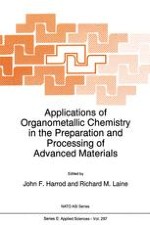In the ten years since the scientific rationale for the design, synthesis and application of inorganic and organometallic polymers (IOPs) was first conceptualised, we have witnessed the first tentative exploration of IOPs as precursors to new materials, with efforts focusing on the design and synthesis of novel ceramic precursors. Developing expertise led to precursor studies combined with the characterisation of the transformation processes that occur when IOPs are converted to ceramic materials. Now at maturity, the science presented in this volume reveals the polymer precursor approach to materials synthesis together with examples of processing ceramic shapes for a range of mechanical properties, the development of sophisticated, noninvasive analytical techniques, and IOP design rationales relying on well-defined processing-property relationships. The production of multifunctional IOPs is described, providing ion conductivity, gas sensing, bioactivity, magnetic properties, etc., combined with processability.
The existence of well-defined IOPs and the exquisite control that can be exerted on sol-gel systems now provide access to such a variety of mixed organic-organometallic and/or inorganic hybrid systems that their exploitation is likely to develop into an entirely new field of materials chemistry. Future exciting avenues of research are also being opened up with the advent of buckyballs, Met-Cars, dopable preceramics, rigid-rod organometallics, and molecular tinkertoys.
